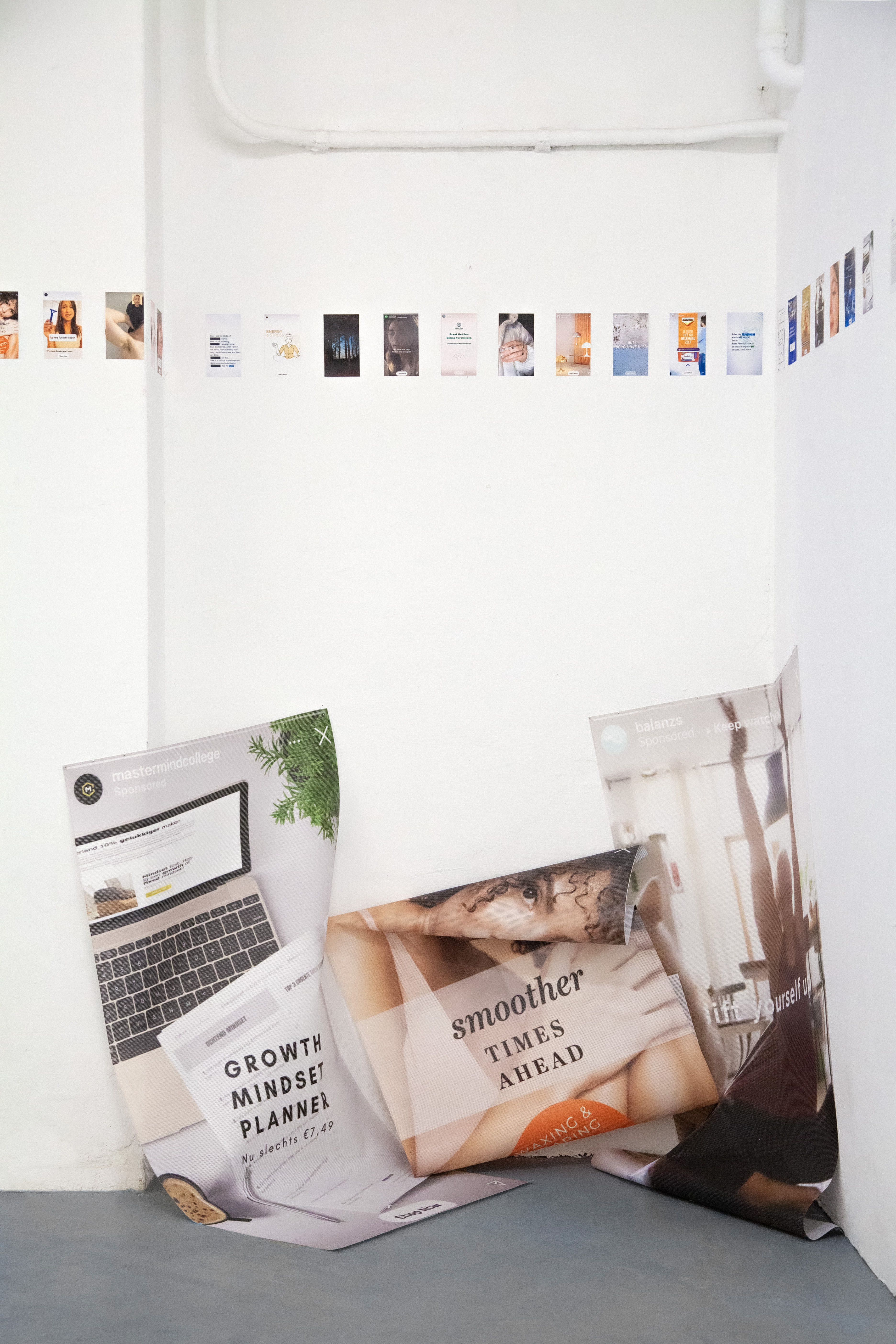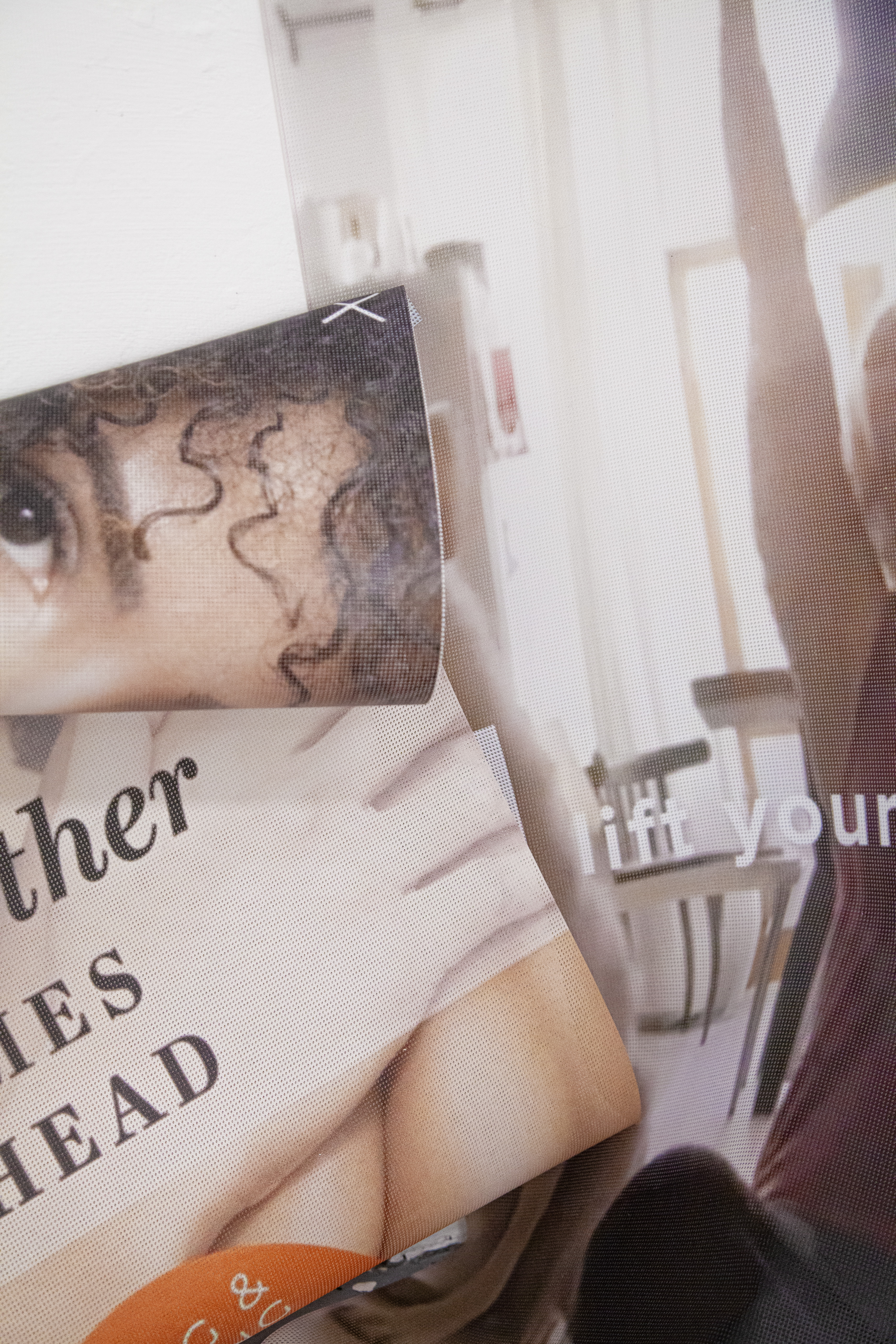2025
Crouching (0.44), Covering torso(0.52), Sad(0.23), Nudity likelihood (0.61)
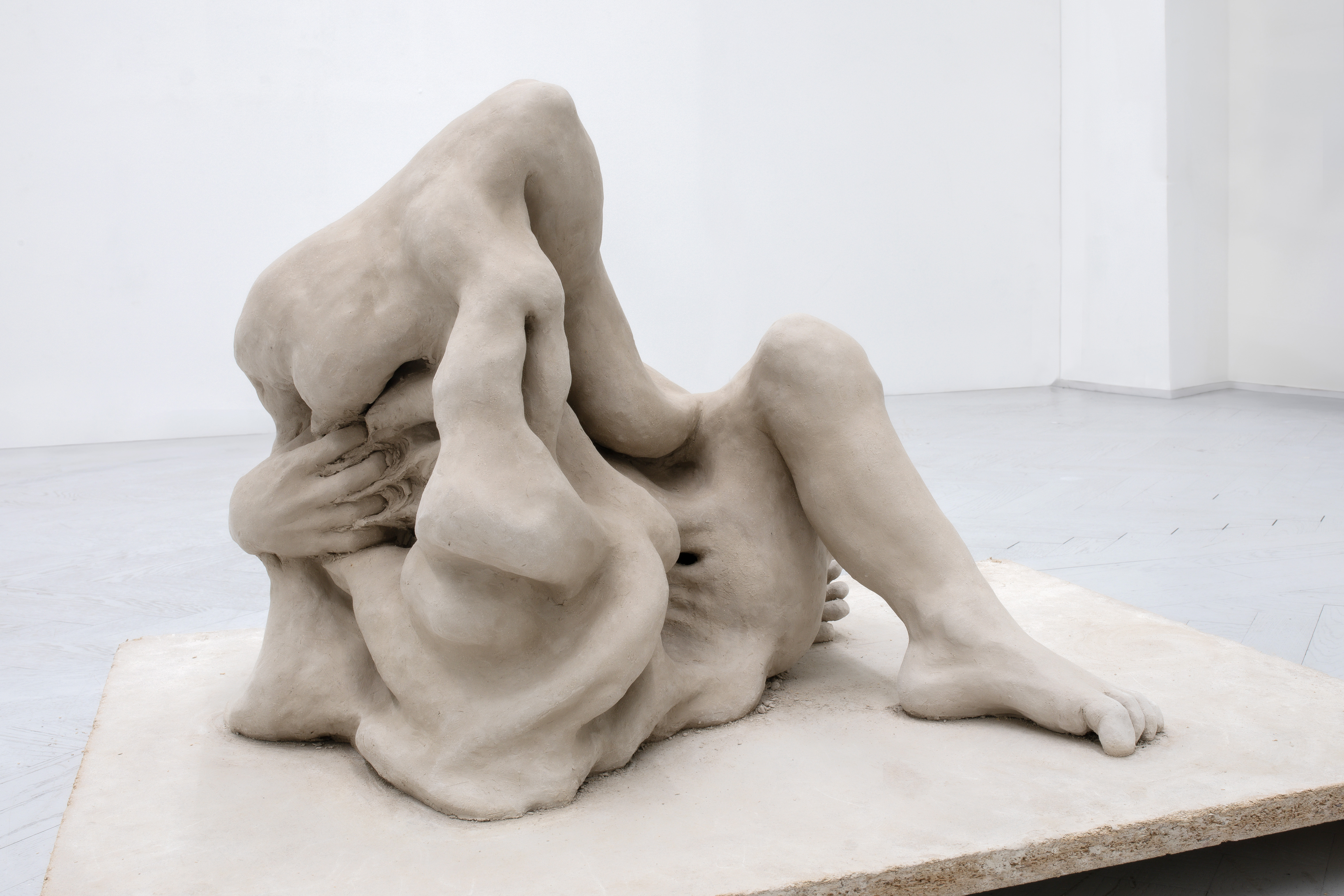
Sculpture‘ Crouching (0.44),
Covering torso(0.52), Sad(0.23), Nudity likelihood (0.61)’
[Pose estimation algorithm, Clay]
80 x 65 x 40 cm
2025
Video ‘False positive’)
[Aluminium, Ipad, Pose estimation algorithm, Camera]
29 x 11 x 5 cm
Full HD
2025
Ears ‘Test tiles’
[Clay, Copper Sulfate, Racomitrium microcarpon, Slime mould]
17 x 17 x 9 cm
2025
Sound ‘How to read character in the face and to
determine the capacity for love, business, or crime’
[Book: Physiognomy by Leila Holt 1864,
Text-to-speech algorithm, Bone conduction speaker]
8:31 minutes
2025
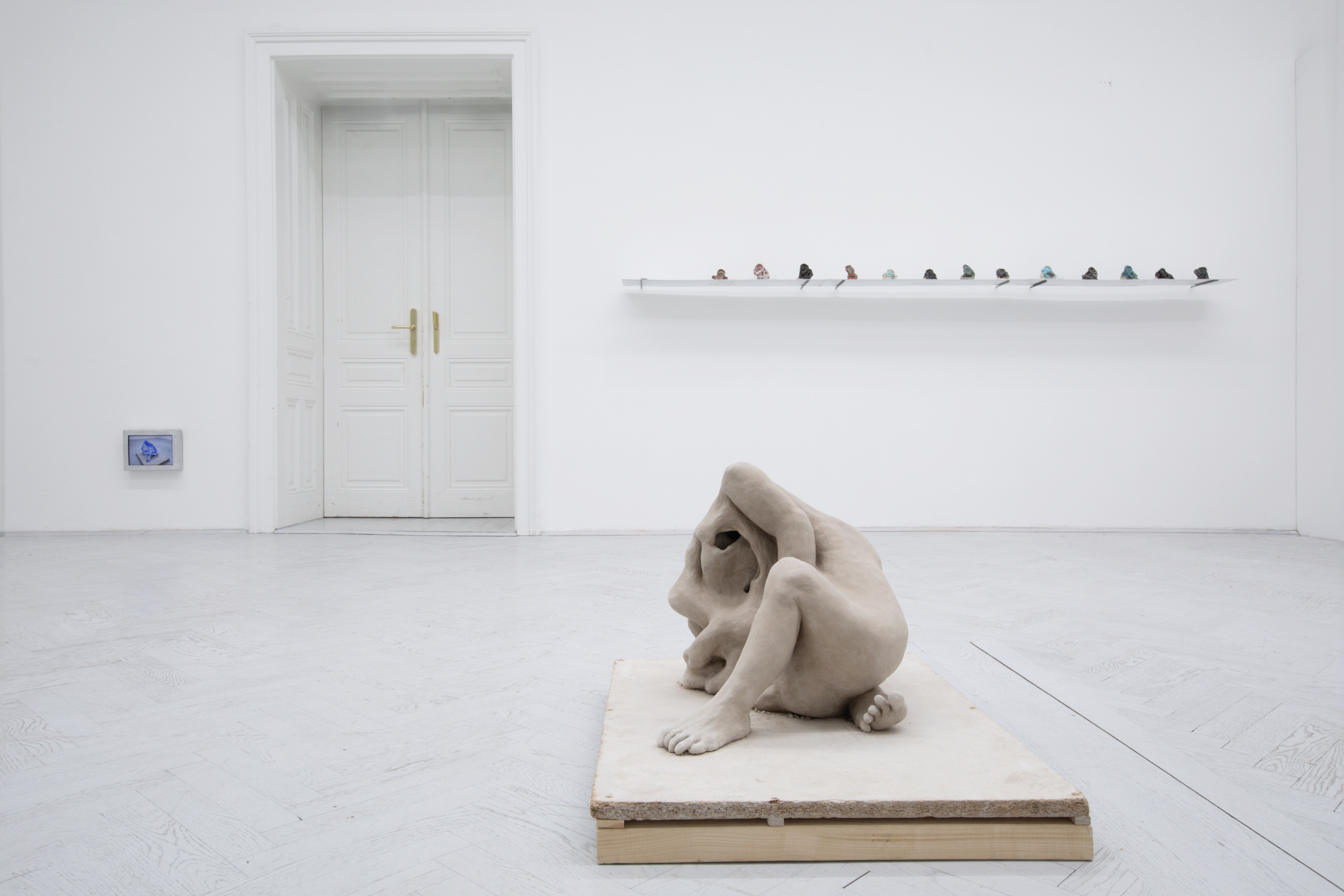
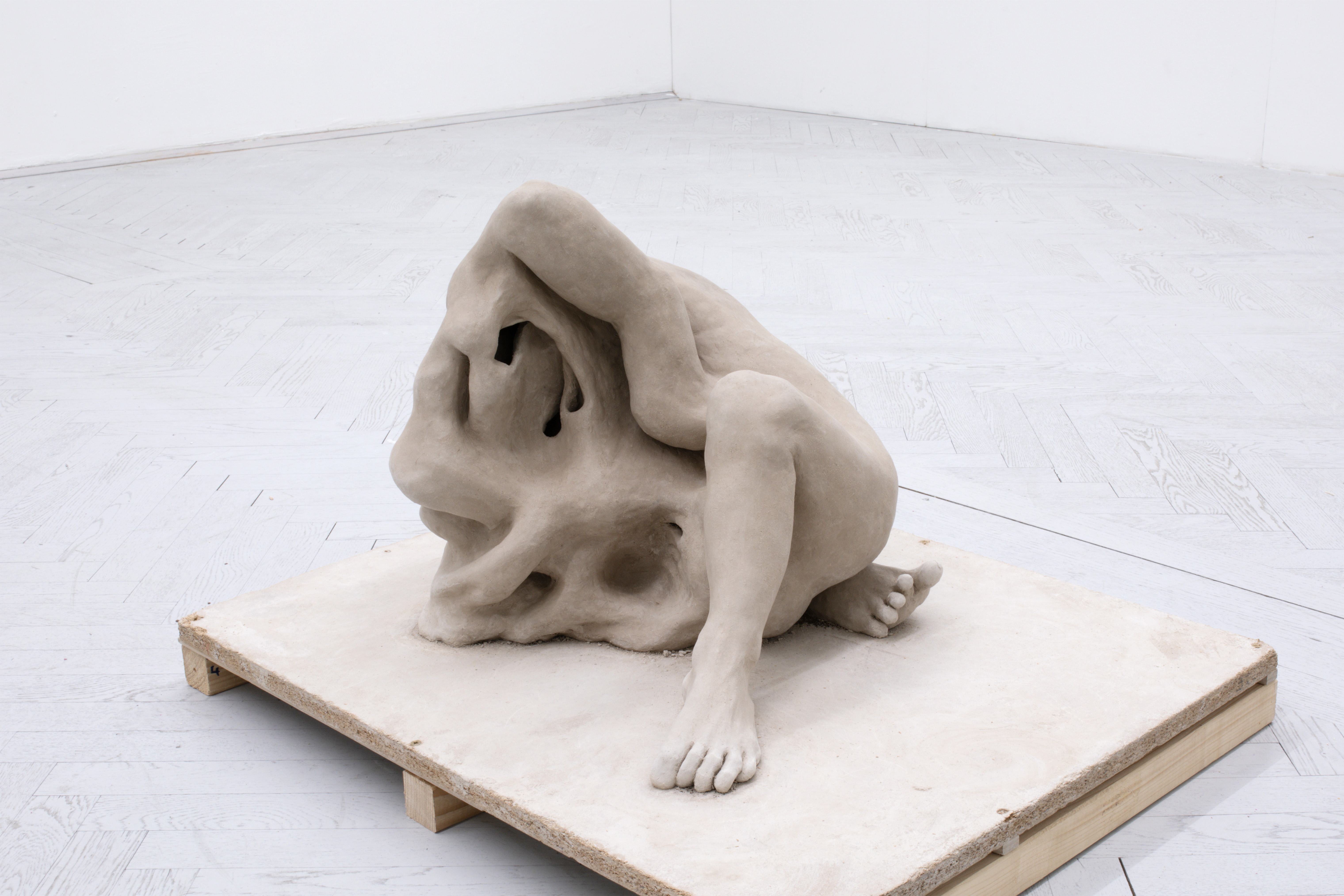



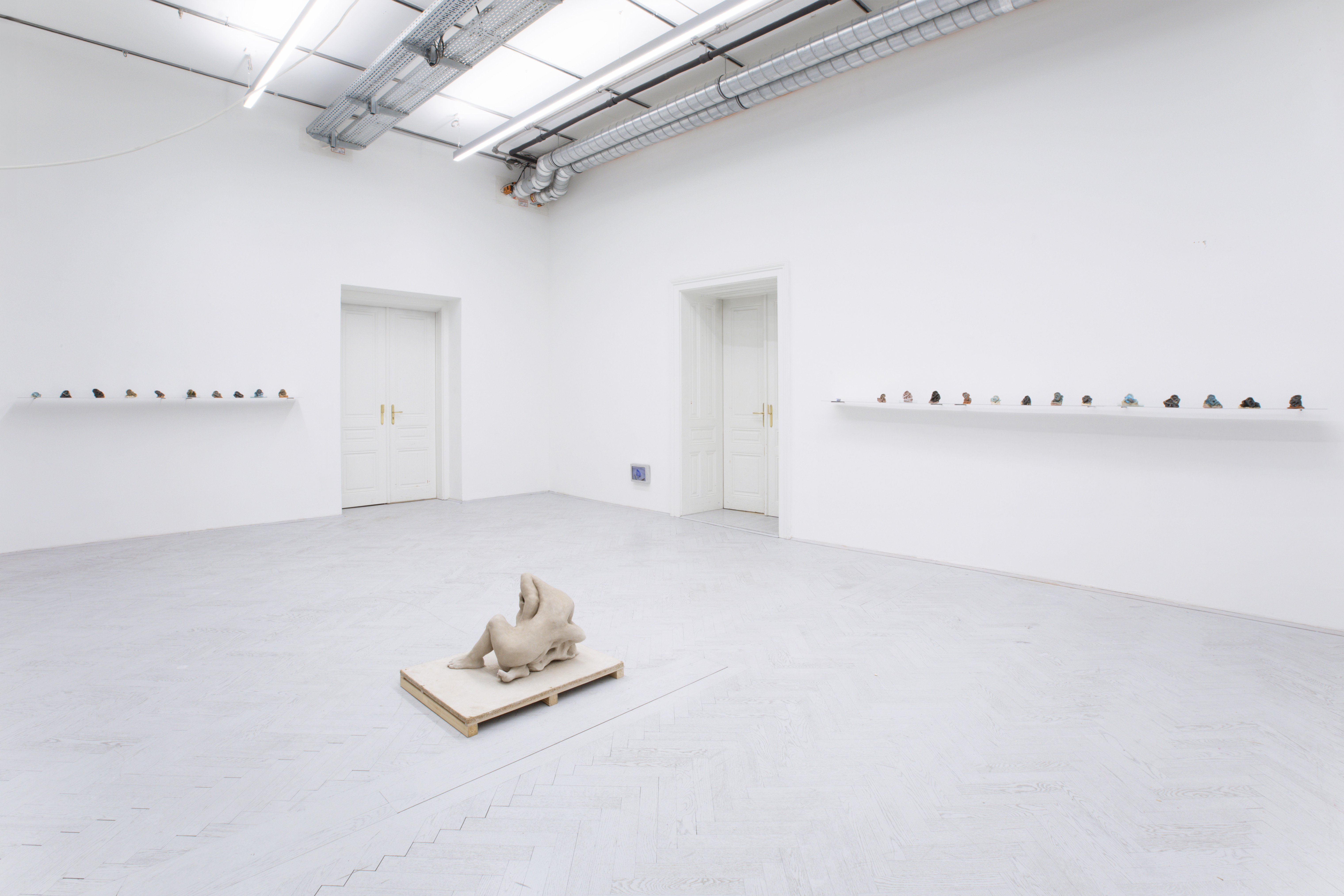
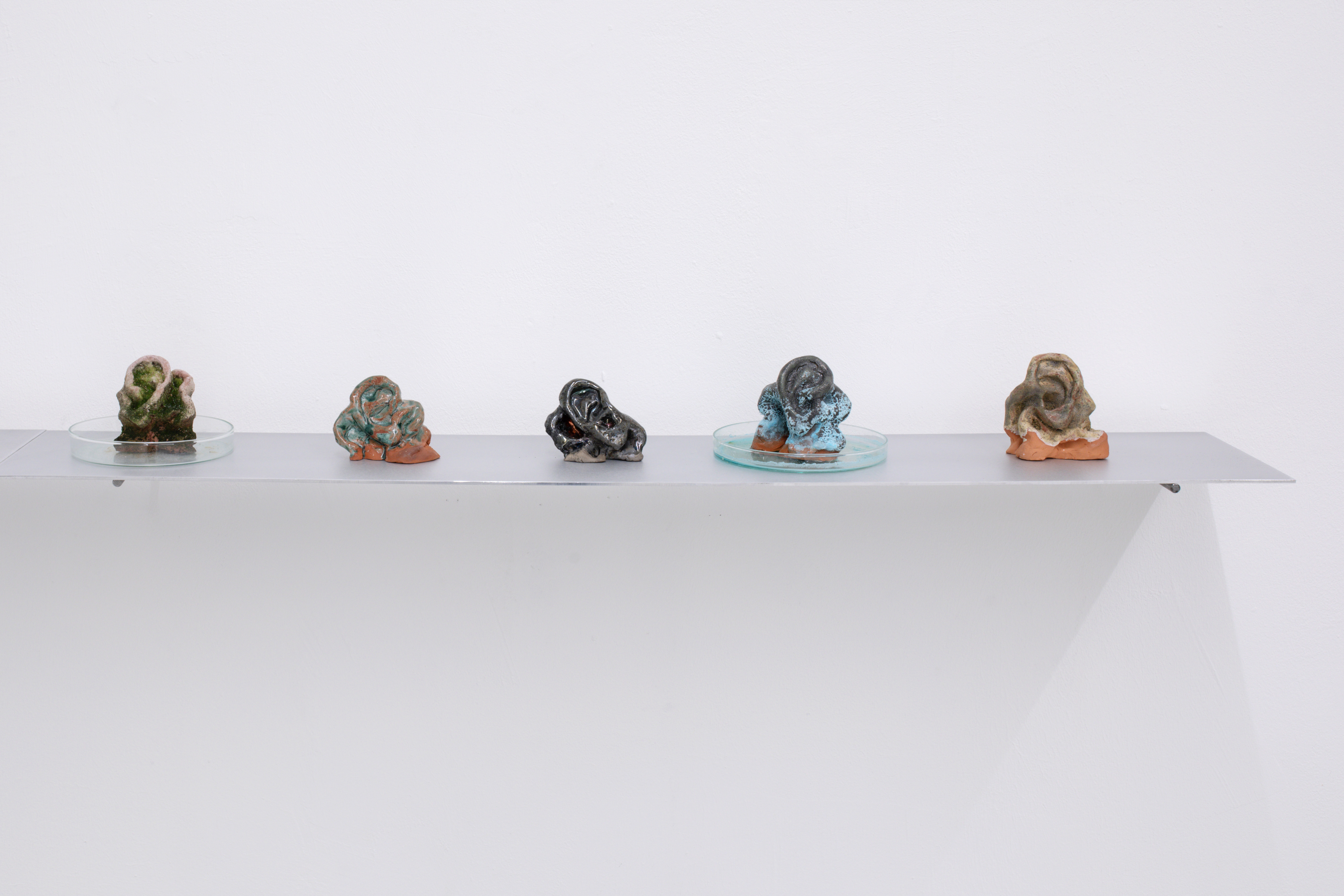
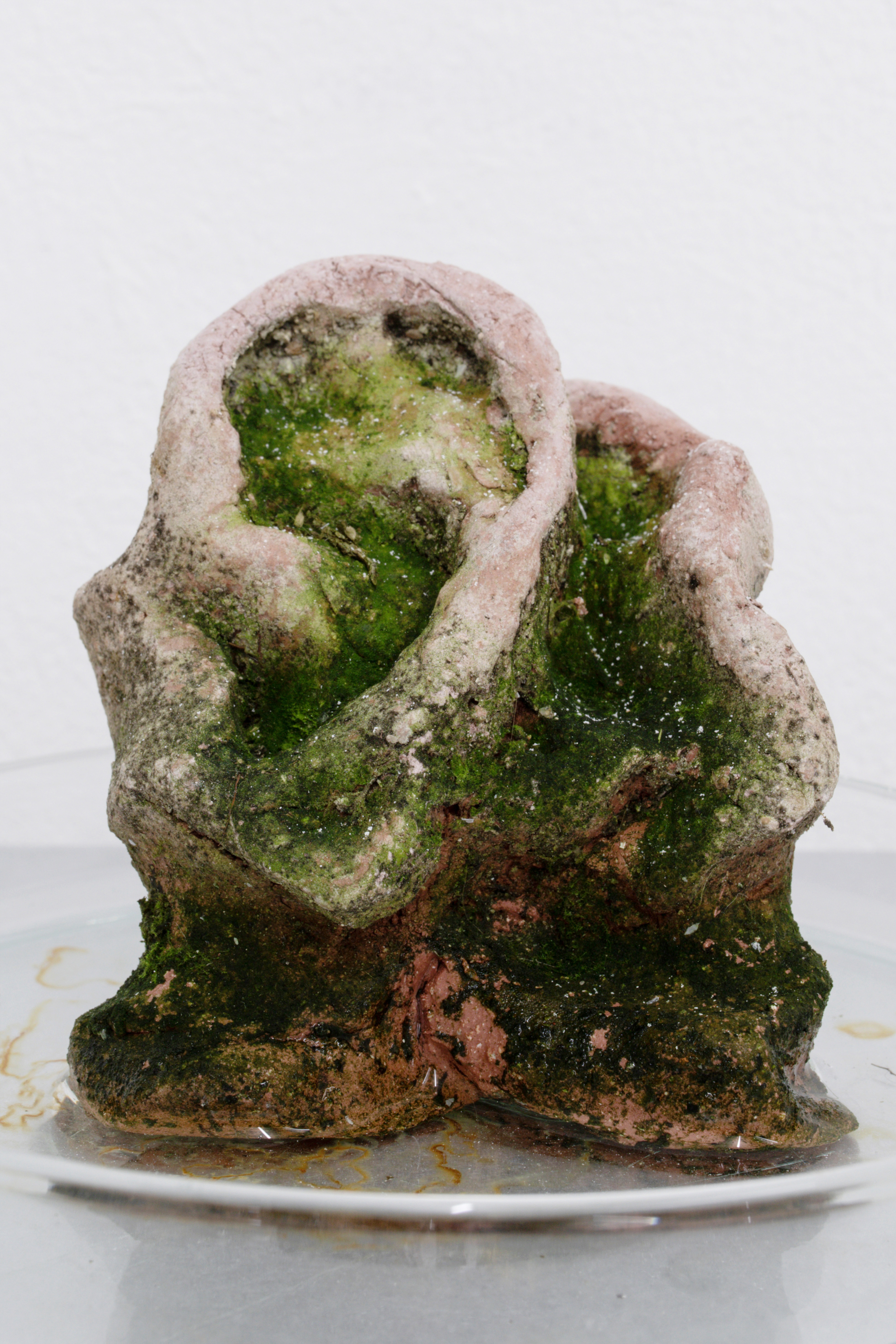



Visual systems have long sought to render bodies legible and determine which bodies get attention and which remain unseen, reinforcing adaptive behavior. The classical canon of proportion once codified ideal beauty in sculpture; physiognomy read character and social worth from facial features. Carried through art, these visual codes shape how bodies are read, ranked, and valued. Today, this practice persists invisibly within social media algorithms and biometric surveillance technologies, turning gestures into probability scores, and the body into numbers.
In response, Kind hands part of her artistic agency to these recognition technologies. Malleable blobs of clay are shaped and reshaped by hand in dialogue with computer vision. This feedback loop between gesture and code continues until the algorithm detects the clay as something “worth attention.” At that moment of recognition, the sculpture is finished, materializing the threshold where the machine mistakes its own projections for a human body. This point marks the completion of the shape, a false positive where limbs act as lures and silhouette suggest torso.
The algorithmic gaze becomes visible in the accompanying video work; a rentless machinic eye scanning, measuring, and labeling the body: Crouching (0.44), Covering torso(0.52), Sad(0.23), Nudity likelihood (0.61). Revealing the classificatory violence beneath the promise of neutral vision.
Beneath this fleeting recognition lies the act of measuring, comparing, and selecting. Traditionally, test tiles are used to study and judge glaze behavior for the final piece. Kind replaced these tiles with ears, pairing them with a generated child’s voice reading aloud from an 18th-century physiognomy manual, judging character and worth of ears. The innocent tone of the voice contrasts with the confident judgement, mirroring the way modern classification algorithms inherit and automate older cultural assumptions and how recognition itself becomes a site of power.
![]()
In response, Kind hands part of her artistic agency to these recognition technologies. Malleable blobs of clay are shaped and reshaped by hand in dialogue with computer vision. This feedback loop between gesture and code continues until the algorithm detects the clay as something “worth attention.” At that moment of recognition, the sculpture is finished, materializing the threshold where the machine mistakes its own projections for a human body. This point marks the completion of the shape, a false positive where limbs act as lures and silhouette suggest torso.
The algorithmic gaze becomes visible in the accompanying video work; a rentless machinic eye scanning, measuring, and labeling the body: Crouching (0.44), Covering torso(0.52), Sad(0.23), Nudity likelihood (0.61). Revealing the classificatory violence beneath the promise of neutral vision.
Beneath this fleeting recognition lies the act of measuring, comparing, and selecting. Traditionally, test tiles are used to study and judge glaze behavior for the final piece. Kind replaced these tiles with ears, pairing them with a generated child’s voice reading aloud from an 18th-century physiognomy manual, judging character and worth of ears. The innocent tone of the voice contrasts with the confident judgement, mirroring the way modern classification algorithms inherit and automate older cultural assumptions and how recognition itself becomes a site of power.

2024
the Valley

Sculpture ‘Hand 41’
[Silicone]
23 x 20 x 10 cm
2024
Sculpture ‘Hand 71’
[Silicone]
29 x 11 x 5 cm
2024
Sculpture ‘Hand 21’
[Silicone, Mechanics and electronics]
23 x 17 x 9 cm
2023
Sculpture ‘HAND 14’
[Silicone]
21 x 18 x 8 cm
2023
Video ‘Lifetime Approval Rate 96%’
[Behind-the-scenes documentation of the
artist performing a data annotation task,
with simultaneous heartbeat monitoring.
LAION-5B Training Database.]
Full HD, stereo sound
7:25 minutes
[Silicone]
23 x 20 x 10 cm
2024
Sculpture ‘Hand 71’
[Silicone]
29 x 11 x 5 cm
2024
Sculpture ‘Hand 21’
[Silicone, Mechanics and electronics]
23 x 17 x 9 cm
2023
Sculpture ‘HAND 14’
[Silicone]
21 x 18 x 8 cm
2023
Video ‘Lifetime Approval Rate 96%’
[Behind-the-scenes documentation of the
artist performing a data annotation task,
with simultaneous heartbeat monitoring.
LAION-5B Training Database.]
Full HD, stereo sound
7:25 minutes
Sound design: MYNRGY
2024
2024






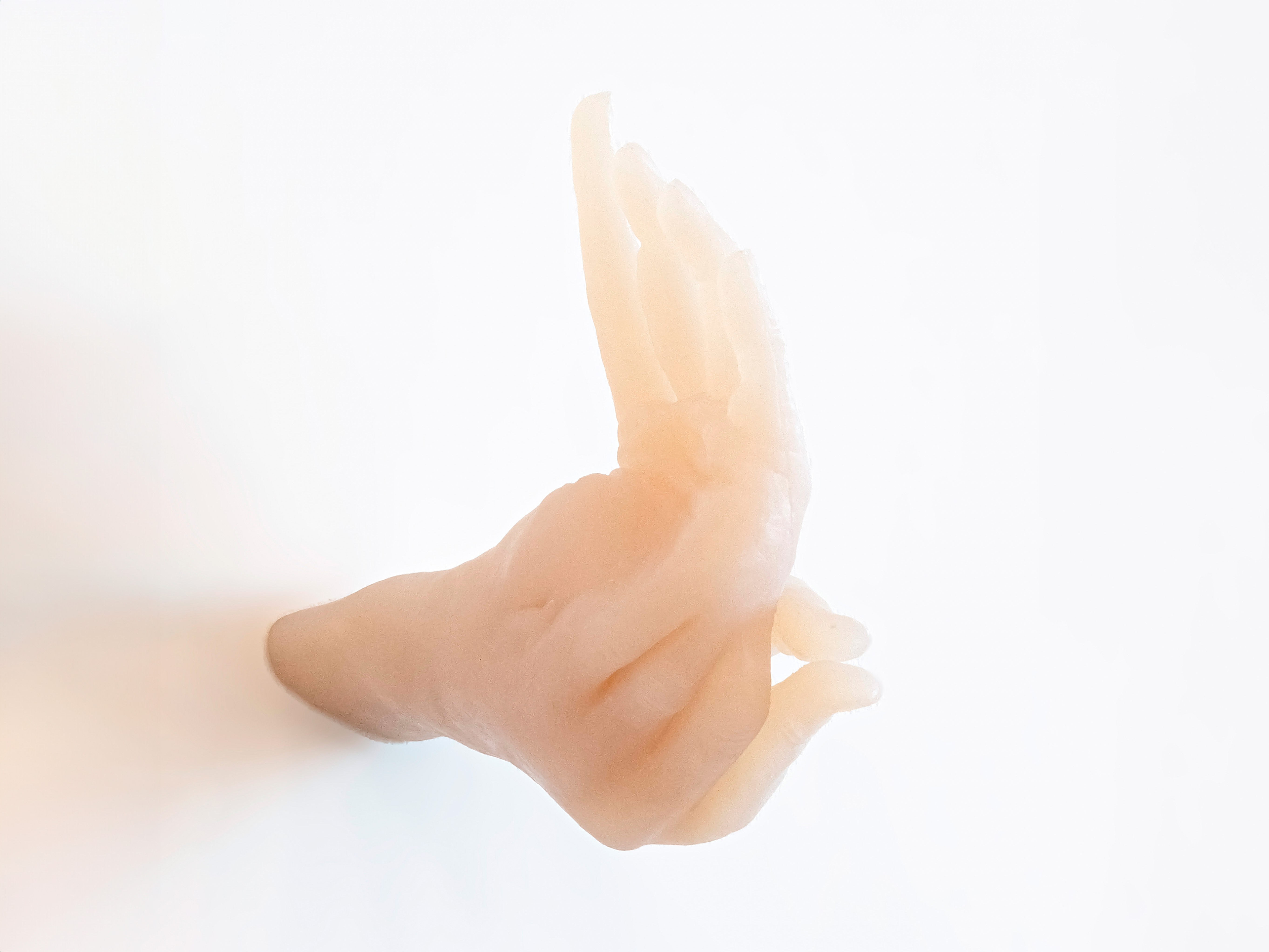
Perched atop the mountain’s summit, where humanity has long sought to touch the divine, the exhibition exposes the physical-world foundations of Artificial Intelligence as it transcends earthly heights.
In the hidden workforce of artificial intelligence, every click matters. Ilse Kind's work draws from her experience as an annotation worker, a silent witness to the unpredictable, repetitive, and underpaid labor shaping machine intelligence. Bound by confidentiality, she captured what was allowed: the clicks of her trackpad, the rhythm of her heartbeat as she worked. In collaboration with MYNRGY, these sounds are amplified into a soundscape, revealing the unseen conditions of this digital labor.
Lifetime Approval Rate 96%, a video work at the heart of the exhibition, shows annotation clicks on a trackpad while exposing the fragmented nature of AI training data—bizarre juxtapositions of medical photographs, miniature army models and cowboy toys. Trained on this erratic material, AI reveals its limits most clearly in its attempts to recreate human hands—producing deformed, anatomically flawed gestures that expose its dependence on this hidden workforce. These glitches take sculptural form in Hand 14, Hand 21, Hand 45, and Hand 71, each shaped by Kind’s own hands yet assembled through the logic of diffusion algorithms, bridging the digital and the physical, machine learning and human labor.
Throughout history, mountains have symbolized enlightenment and the pursuit of divine power. In this elevated setting, Kind’s work reimagines these aspirations within the context of technological progress at every cost. The summit embodies humanity’s drive for godlike creation- artificial intelligence as a modern Prometheus, reaching toward omnipotence, yet still bound by the unseen hands that shape it.
Teaser
2024
Happiness Machine

Installation ‘Happiness machine’
[Pose-landmark detection system, Camera, Aluminium,
Irrigation nozzle, Tube, Water]
110 x 110 x 150 cm
2024
Sculpture ‘BLOB #2’
[Wet Clay]
90 x 70 x 60 cm
2024
[Pose-landmark detection system, Camera, Aluminium,
Irrigation nozzle, Tube, Water]
110 x 110 x 150 cm
2024
Sculpture ‘BLOB #2’
[Wet Clay]
90 x 70 x 60 cm
2024




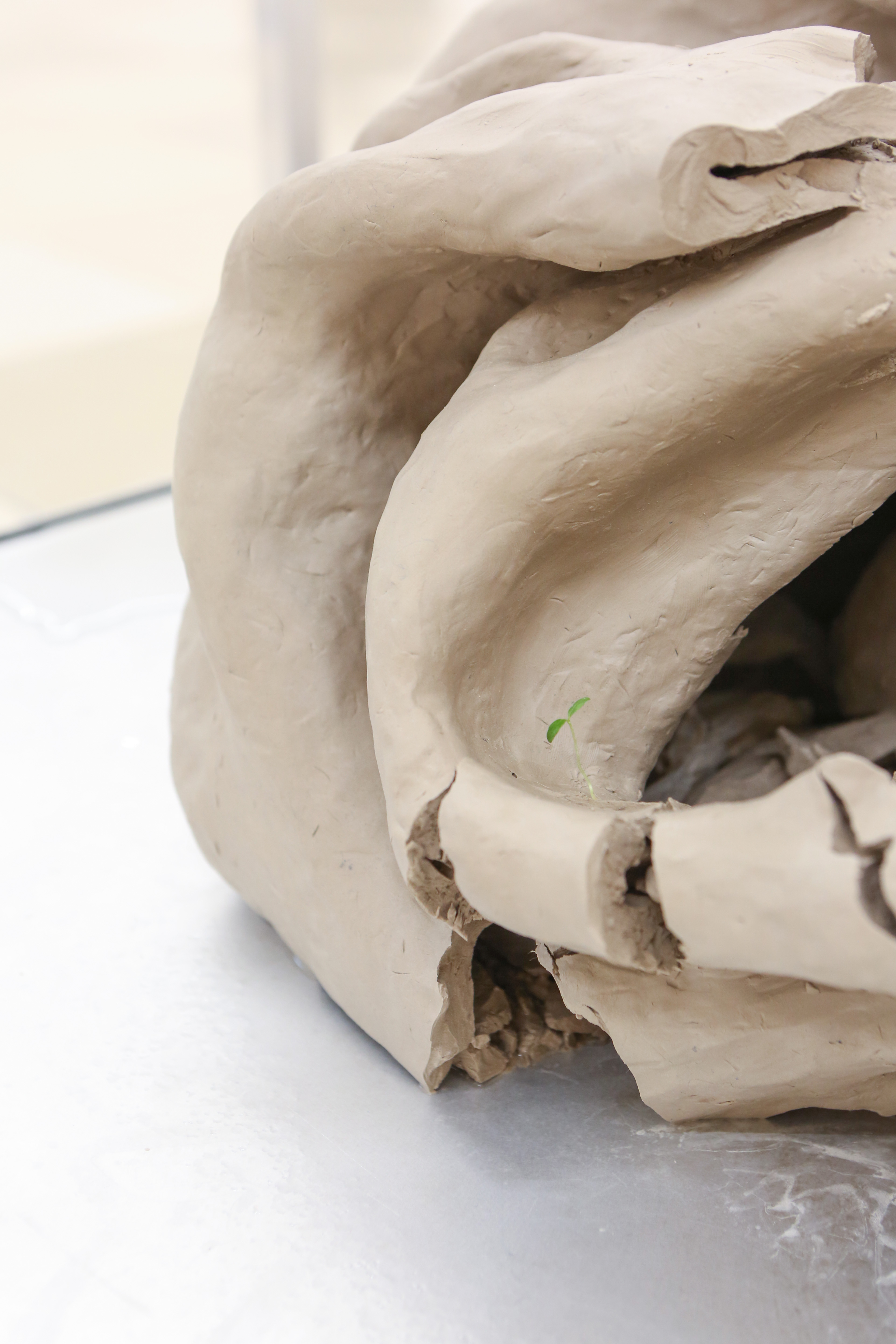

In the gaze of algorithms, human bodies are sculpted by data flows. Surveillance systems track how we move and express, while moulding us into simplified, predefined forms. These systems prioritize basic emotional states, fueling emotions like happiness. Treated as malleable data containers, BLOBs (Binary Large Objects), we are reduced to the data we produce or lack. Simplified to analyzable shapes, we are left with only the most basic expressive features."
In this installation, the clay sculpture embodies this condition. Shaped in a predefined "happy" pose to satisfy the pose recognition system, its survival depends on water. A feedback mechanism irrigates only when its form aligns with the algorithm's expectations. Yet, this act of validation, meant to preserve, gradually strips it of its identity. Too much water risks dissolution, softening the figure, while too little causes it to dry out and crumbles away, returning back to soil. Here, the act of being seen becomes both a lifeline and a form of erasure, caught between becoming and being in systems that prize visibility over human complexity.
Teaser
2022
OUR MIND AS A HOST

Video Installation
[Database with 1866 images,
321 sounds of parasites
and surveillance technologies]
750 x 300 cm










Documentation video
Our Mind as a Host explores the unsettling overlap between parasites and surveillance systems, revealing them as new species that feed on human bodies, behavior, and perception. The viewer becomes the host for the works’ parasitic form, a subject of manipulation rather than a passive observer.
‘‘New species are entering our world and living at our expense. As parasites, hidden surveillance technologies are preying and feeding on us. When they find a weak spot, their biometric algorithms crawl under our skin without consent. They modify behavior, interpret and maybe even shape one’s being, often without us noticing.’’
Drawing on a hand-assembled archive of 1,866 images and 321 sound samples, Our Mind as a Host forges a taxonomy of control. It compares the form and behavior of parasites and surveillance technologies, from facial recognition cameras to biometric sensors
The result is a psychovisual experiment: an a-rhytmic fast-moving montage in which image pairs are arranged by mental association, controling the viewers eye over the screen. Just as surveillance and parasites can reshape behavior, Our Mind as a Host manipulates the viewer’s perception, producing a “third image” in the brain, and use our mind as a host.
2024
Lifetime Approval Rate 96%

Sculpture ‘HAND 14’
[Silicone]
21x18 cm
2023
Mechanical Sculpture ‘HAND 21’
[Silicone, Mechanics]
23x17 cm
2023
Video Installation ‘Lifetime Approval Rate 96%’
[Annotation work on A training platform,
Laion-5B Database, Recorded heartbeat,
Raspberry pi, LCD Screens, Speaker]
Variable size
2024
Sculpture ‘Training data’
[Silicone]
Variable size
2023
[Silicone]
21x18 cm
2023
Mechanical Sculpture ‘HAND 21’
[Silicone, Mechanics]
23x17 cm
2023
Video Installation ‘Lifetime Approval Rate 96%’
[Annotation work on A training platform,
Laion-5B Database, Recorded heartbeat,
Raspberry pi, LCD Screens, Speaker]
Variable size
2024
Sculpture ‘Training data’
[Silicone]
Variable size
2023


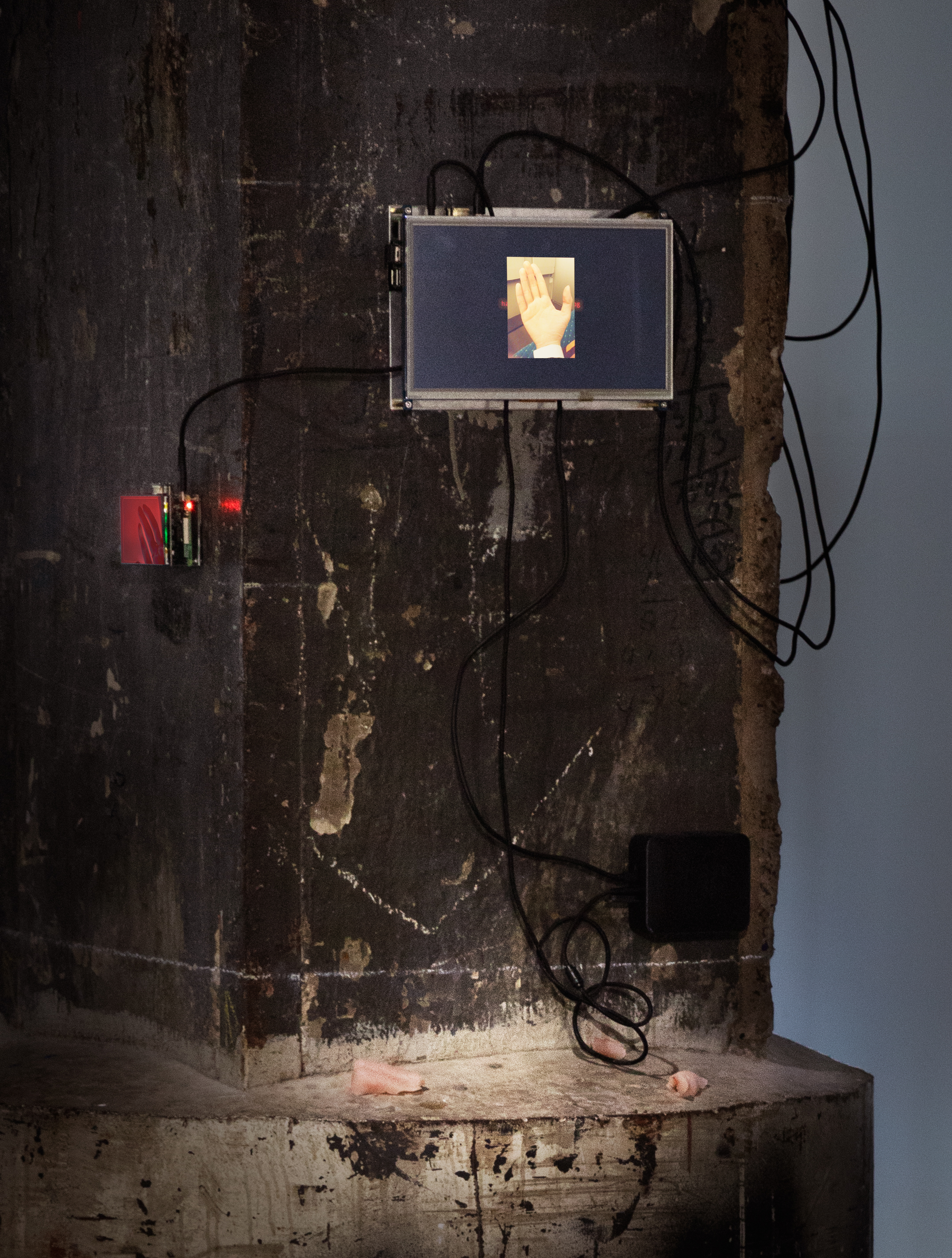


Documentation video
Hands, central to human expression and labor, have long carried hidden emotions and involuntary messages. Once symbols of resilience and alienation in the shift from manual craftsmanship to mechanized industry, hands now navigate the blurred boundaries between physical and digital spaces. In Ilse Kind’s work, hands take on new meaning within the digital age, shaped by Artificial Intelligence.
This dual installation features Hand 14, Hand 21, Hand 45 and Hand 71, sculptures that physically resemble AI-generated hands: distorted and anatomically flawed. Their unfamiliar gestures signal the hidden dependence of AI systems on human resources; particularly those of undervalued annotation workers. Their hands, compelled by economic necessity, tirelessly train AI systems what human reality looks like. This dynamic reflects how human labor is quietly absorbed and discarted to create the illusion of autonomous technology, leaving their contributions obscured and unacknowledged.
The video work Lifetime Approval Rate 96% reveals these hidden mechanisms, offering a glimpse into the biases interwoven in databases, and the relentless, repetitive clicks that are the lifeline of AI systems.
By blending AI-generated forms with their human origins, the installation explores the hidden relationship between creator and creation exposing the pervasive extraction of value from the hands that sustain our evolving technological ecosystem.
[Accompanying essay ’Handwerker; a human resource farm’ on request ︎]
2022
SPONSORED

Book ‘Sponsored’
[Ink on paper, saddle stitch binding]
21 x 21 cm (1080 x 1920 px)
2022
New dummy in production
[Ink on paper, saddle stitch binding]
21 x 21 cm (1080 x 1920 px)
2022
New dummy in production




SPONSORED is a photobook novel that exposes an intimate and escalating dialogue between a person and an algorithm. Through a chronological collection of personalized advertisements and chat conversations, the work reveals how technology not only observes, but also replies; subtly influencing identity, self-image, and behavior.
‘’The relationship with my phone used to feel like a one-way relationship. But now it is getting more intelligent and is able to talk back sometimes. Swiping from advertisement to advertisement, I’m in a continuous feedback loop of who I consciously- but also unconsciously am. Or maybe; of who I should be?’’
This usually unnoticed exchange is laid bare in book form, through a brutally honest and intimate archive of data. What begins as a stream of seemingly neutral suggestions slowly evolves into a more invasive exchange. What begins as a stream of neutral suggestions gradually evolves into a more invasive exchange. The algorithm starts mirroring assumptions, reinforcing biases, and eventually develops a voice — taking sides in personal conflicts, offering unsolicited diagnoses, and quietly steering moral decisions.
In this narrative, lifestyle choices like eating healthy, migrating, or being in a relationship are misread as signs of pregnancy. Personalized ads build a distorted self-image, reflecting not the person, but the datafied interpretation of who they might be. As the story unfolds, the system seems to pick sides, question intimacy, and push the user toward increasingly destructive choices.
SPONSORED explores how digital systems engage with us not only functionally, but relationally. Simulating care, misunderstanding boundaries, and ultimately blurring the line between interaction and control.
